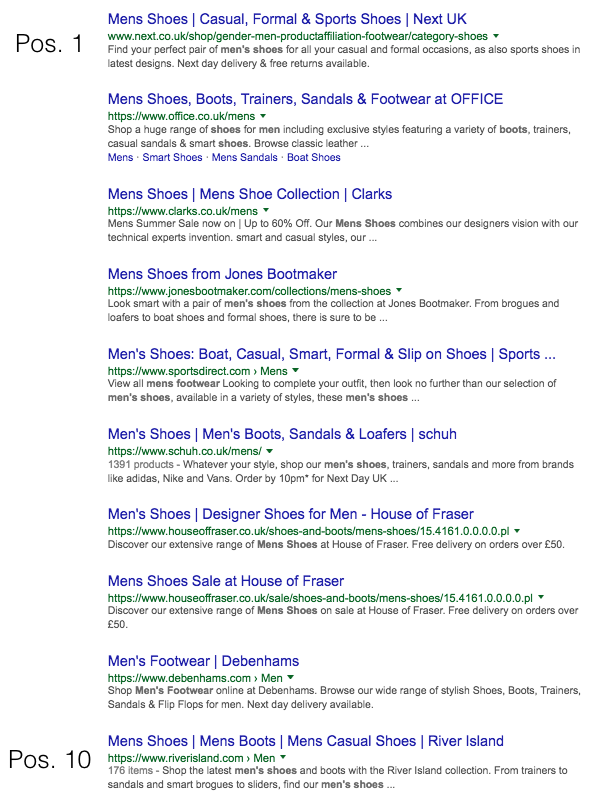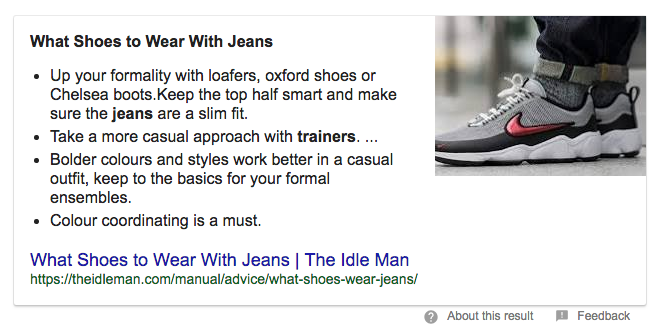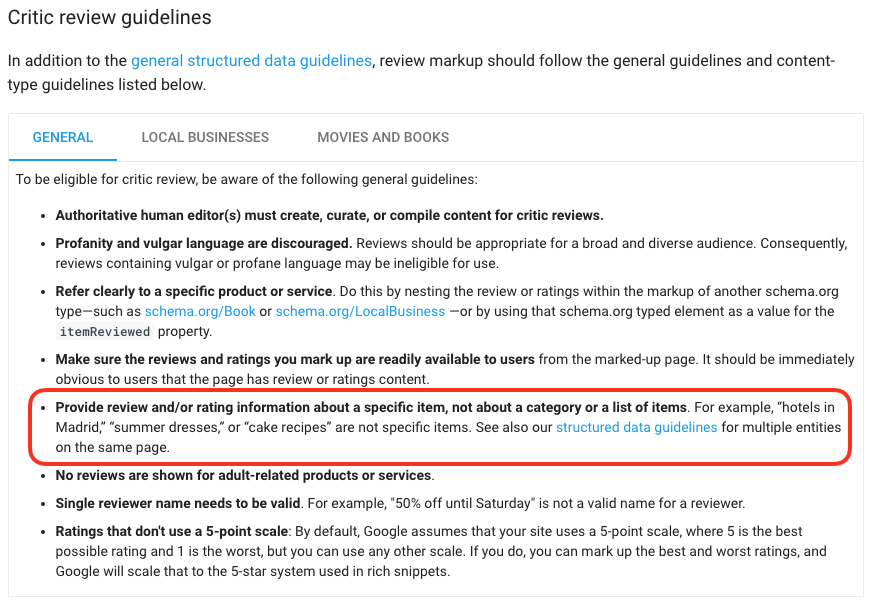2 min read
What is Google Search Generative Experience? (SGE)
What is Google SGE? Think of Google SGE as your helpful buddy on the search results page. Instead of making you click on different websites, it pulls...
We live in an age where e-commerce is not only growing at an unprecedented rate, but it’s also re-shaping the retail industry as we know it. Failing to invest in e-commerce could pose a number of risks to your business.
However, it’s not all bad news! An investment in e-commerce can also provide a wealth of opportunity for your business. One way to enhance the opportunities that e-commerce brings is by implementing a sound SEO strategy into your digital plans.
As a specialist search marketing agency, it’s safe to say that we have seen our share of SEO problems, and we’re here to guide you on the right path to optimising your site effectively.
Below are some of the most common SEO failings of e-commerce websites and how you can avoid them.
Keyword research has to be the backbone of any digital strategy and this is never truer than with e-commerce.
Keyword research provides you with the valuable data behind the terms that people are actually searching for. It also helps to reduce any ambiguity or confusion that you have regarding which terms can provide you with the most opportunity.
Here are a couple of examples as to how accurate keyword research can benefit your site:
You should always design your site architecture around keyword data. When deciding which categories, subcategories, and product ranges you want to create, you should always review the search volumes. This helps to ensure that there is consumer demand and opportunity for you to target.
Another way in which keyword research can benefit your site architecture is by helping you create an effective faceted navigation. To find out more on this, visit our post on how to increase your keyword coverage through faceted navigation.
On-page SEO is fundamental to a well-optimised website, and this too should be heavily based upon your keyword research.
It’s important that you create your page titles, H1 tags and page copy based on keyword research findings and not from what you believe your customers are searching for.
For example, you may find that in your industry your products or services are known by an abbreviation, short-name, or technical name that your customers will not know. This means that they are unlikely to search for those terms, so if you were to optimise for them based on your own experience, you will find little benefit.
So, by conducting thorough keyword research before any on-page optimisations take place, you will be able to ensure that every action you take is a positive step forward.
Summary: Always use accurate and relevant keyword research as the basis of all SEO work on your website. Make sure that the keyword research is in-depth, targets the correct user and provides you with an opportunity to increase your visibility. Don’t select keywords that you will struggle to rank for.
Tip: Remember to carry out individual keyword research for all of the territories that you cover to avoid incorrect geo-targeting. For example, a travel agent would target the term holidays for the UK market but would target vacation for the US market.
For more information, read our post on the applications of keyword research.
This is where you need to do some research.
If the search engine results page (SERP) results for the primary keywords that you are planning to target are filled with high authority sites, you may find yourself struggling to rank for these terms, regardless of how well optimised your site is.
For example, let’s assume that you operate in the fashion industry and you are optimising your mens shoes category page. This keyword has a monthly search volume of 74,000 and page 1 of the search results looks like this:

If your chances of ranking for the term ‘mens shoes’ is non-existent based on the brands currently holding positions 1-10, then try being more descriptive and target your categories more specifically.
For example, use mens white suede shoes or mens red velvet shoes, as these terms are likely to be far less competitive. They’re also more descriptive and show greater buying intent, so consumers may be more likely to purchase
It’s important to remember that you shouldn’t always focus on the keywords with the highest monthly search volume. Instead, find the right balance between volume, competition and intent.
Summary: Review the SERP listings for your chosen keywords and ask yourself if you think you have opportunity to compete there. If the top 10 results are taken by highly authoritative websites, with a strong backlink profile and well-optimised pages, then it’s going to be far more challenging for you to compete in the short term.
Tip: You can leverage long-tail keywords to increase your visibility for terms with lower competition, with a higher chance of ranking. Find out more about long-tail keywords below.
This can create issues for your product pages. If you’re using the same product description as the manufacturer, then you have to assume that there are multiple other websites also doing this.
This means that your product pages, if indexed, are now competing with a number of other websites with the exact same content. This isn’t good.
Summary: Create unique page copy and product descriptions whenever you can. This not only provides the opportunity to create your own tone of voice but generates unique content for your website.
Long-tail keywords provide you with the opportunity to target search terms that are less-competitive, often informational (and non-transactional), and are a great way to increase your brand authority within your market.
The long-tail keyword is often used within blog content and allows you to capture an audience that may be at a different stage of the conversion funnel than those targeted by your primary keywords.
So why is it that this form of keyword is sometimes ignored by e-commerce websites? Ignoring long-tail keywords limits your opportunity to capture traffic and boost your brand presence.
Here’s an example of how long-tail can help you:
We remember from earlier that the term mens shoes has a monthly search volume of 74,000, and may prove extremely difficult to rank for.
However, the search term mens shoes to wear with jeans has a monthly search volume of 40, and the SERP listing is far less competitive.

This term could make for a useful blog post that not only captures users with the right intent but allows you to drive these users to specific product pages through internal linking. This makes the user-journey as short as possible and increases the chance of converting.
This type of content also has value when shared on social media, allowing your brand to continuously add value to your customers whilst driving traffic to your website.
Summary: Use long-tail keywords to plan your editorial content and create fresh, informative and valuable content on a regular basis.
Tip: Structure your blog content to target the featured snippet for your search term where possible. A featured snippet, also known as Position Zero, displays a ‘snippet’ of your content at the top of the SERP, which can increase your traffic and brand authority.
For a great example of how you can use long-tail trends to your advantage, take a look at how Misguided developed a category on the Jeans and a nice top outfit combination.
When it comes to technical SEO and e-commerce websites, it can be easy to forget how one complements the other. This can be a dangerous mistake to make.
The list of technical SEO factors that should be taken into consideration for e-commerce websites is a long one, and not something that should ever be neglected. Here are a few examples:
Schema is a form of structured data markup that allows you to provide users with more information on your products and services, providing more contextual information to Google.
Does your website utilise schema to maximise your SEO efforts? Here are some schema types that can help your e-commerce site:
Product schema allows you to provide more contextual information on your products, including price, product description and aggregate product reviews. Although schema is not a direct ranking factor, it can help to increase your click-through rate.
Breadcrumb schema helps the user (and Google) better understand your website hierarchy, which can allow for easier navigation through your categories and subcategories, and make for a better user experience.
Tip: Do not use review schema on category pages. This is designed to provide reviews for individual products and services. Combining reviews across multiple products on one category page is a violation of Google’s guidelines and can be a quick way to earn yourself a manual action penalty.

We briefly touched upon error pages above, but it’s also important to consider 301 and 302 redirects when reviewing out of stock products. Here is a breakdown on when each option is the best choice:
When a page is deleted it will return a 404 error code, meaning that the page requested could not be found.
Generally, it is recommended to reduce the amount of 404 error pages on your website as these provide a negative user experience. These pages also fail to pass on any link equity.
However, if you have an abundance of product pages that are continuously reverting from in-stock to out-of-stock, and vice versa, then it can be more time-efficient to have these pages swap between a 404 and a 200 status code (a 200 meaning that the page is live and working as expected).
A 301 redirect is used when a page has been permanently deleted and you want to take the user to the next best page (often a category page).
This is the preferred option as it allows both the user and Google to continue their journey on your website, and reduces the risk of the user exiting your site. A 301 redirect also passes link equity.
A 302 redirect is used when a page is temporarily unavailable but will be returning. E-commerce websites can utilise a 302 redirect for seasonal items that are temporarily unavailable.
Examples of these include any product ranges and categories for Christmas or Halloween items. 302 redirects also pass link equity.
Having effective on-page SEO is definitely essential, but one quick way to cancel its benefits is by having a slow-loading website. This is one aspect of technical SEO that is often overlooked, but it’s also one that can have the biggest impact on your site.
It’s often only when a search marketing agency or web developer reviews your site that these problems are uncovered, but it doesn’t have to be that way.
Google offer free tools such as PageSpeed Insights to allow you to review your website’s loading times. Remember, this is also important for mobile as well as desktop!
Implementing effective technical SEO for an e-commerce website can prove difficult, and what is required often varies per website depending on the website hierarchy, range of products available and many other factors.
It’s vital to your website’s success that your technical SEO is handled with care, as simple errors can quickly create wide-scale issues that can prove costly to recover from.
Tip: If you’re unsure as to how to implement the above technical SEO recommendations then we recommend consulting a web developer or technical SEO expert to avoid any critical mistakes.
It’s not uncommon for websites that receive extremely high levels of traffic within a small time period to encounter server errors and down-time. This is especially true for companies that offer wide-ranging discounts or for annual events such as Black Friday.
If you are expecting rapid growth or seasonal peaks then you have to ensure that your server can withstand this. Failing to do so can result in a wealth of lost opportunity and revenue.
Amazon were recently the victim of this exact scenario when the website failed to handle the volume of traffic it received on Prime Day and experienced a multitude of issues. It’s safe to assume that this would have cost the company millions of dollars.

It’s important to make sure that your hosting company and/or server can withstand the volume of traffic that even your largest estimates project.
Summary: Make sure that a strong and effective technical SEO plan is the backbone of your e-commerce website. Don’t leave technical SEO considerations until the end of your website build. Keep the above in mind during the planning phase and remember that it is often an ongoing process and not a one-time fix.
Hopefully by this point you have a much stronger understanding of how to avoid these critical SEO errors with your e-commerce website.
If you would like to discuss the information above in further detail, or would like to find out how our SEO services can help you, then contact us today.

2 min read
What is Google SGE? Think of Google SGE as your helpful buddy on the search results page. Instead of making you click on different websites, it pulls...

5 min read
Discover the power of high search volume keywords and how to effectively use them to boost your online presence and drive maximum impact.

2 min read
We're delighted to officially announce our partnership with Eflorist, one of the world’s leading flower delivery brands with over 54,000 local flower...
We live in an age where e-commerce is increasingly competitive. In “Queen of the internet” Mary Meeker’s Internet Trends Report for 2019 in June, she...
1 min read
Having recently discovered a site called visiblemeasures.com, I have been spurred on to bring you a list of amusing viral commercials from the...
1 min read
So I had found the Visible Measures website, where each week the Top Viral Ad Campaigns of the Week are to be found and as promised I am looking to...